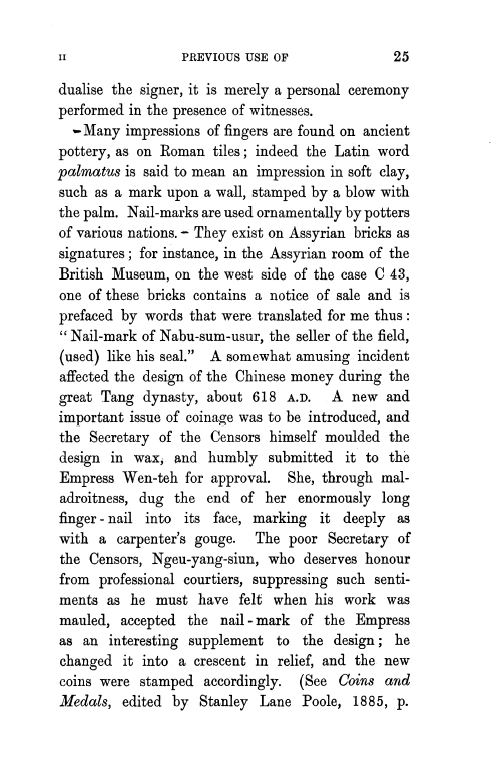II
PREVIOUS USE OF 2 5
dualise the signer, it is merely a personal ceremony performed in the presence of witnesses.
Many impressions of fingers are found on ancient pottery, as on Roman tiles ; indeed the Latin word palmatus is said to mean an impression in soft clay, such as a mark upon a wall, stamped by a blow with the palm. Nail-marks are used ornamentally by potters of various nations. - They exist on Assyrian bricks as signatures.; for instance, in the Assyrian room of the British Museum, on the west side of the case C 43, one of these bricks contains a notice of sale and is prefaced by words that were translated for me thus " Nail-mark of Nabu-sum-usur, the seller of the field, (used) like his seal." A somewhat amusing incident affected the design of the Chinese money during the great Tang dynasty, about 618 A. D. A new and important issue of coinage was to be introduced, and the Secretary of the Censors himself moulded the design in wax, and humbly submitted it to the Empress Wen-teh for approval. She, through maladroitness, dug the end of her enormously long finger -nail into its face, marking it deeply as with a carpenter's gouge. The poor Secretary of the Censors, Ngeu-yang-siun, who deserves honour from professional courtiers, suppressing such sentiments as he must have felt when his work was mauled, accepted the nail-mark of the Empress as an interesting supplement to the design ; he changed it into. a crescent in relief, and the new coins were stamped accordingly. (See Coins and Medals, edited by Stanley Lane Poole, 1885, p.
